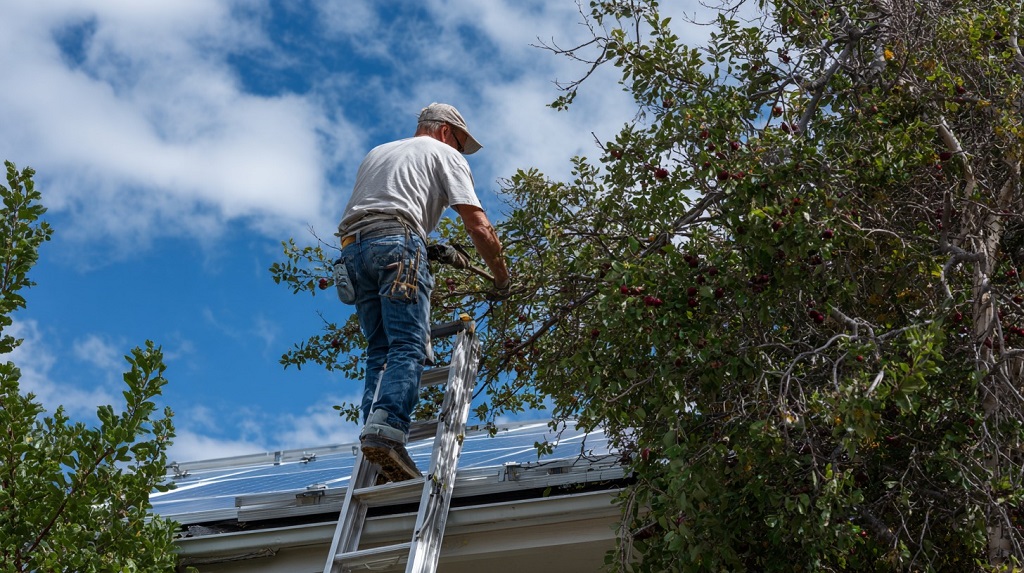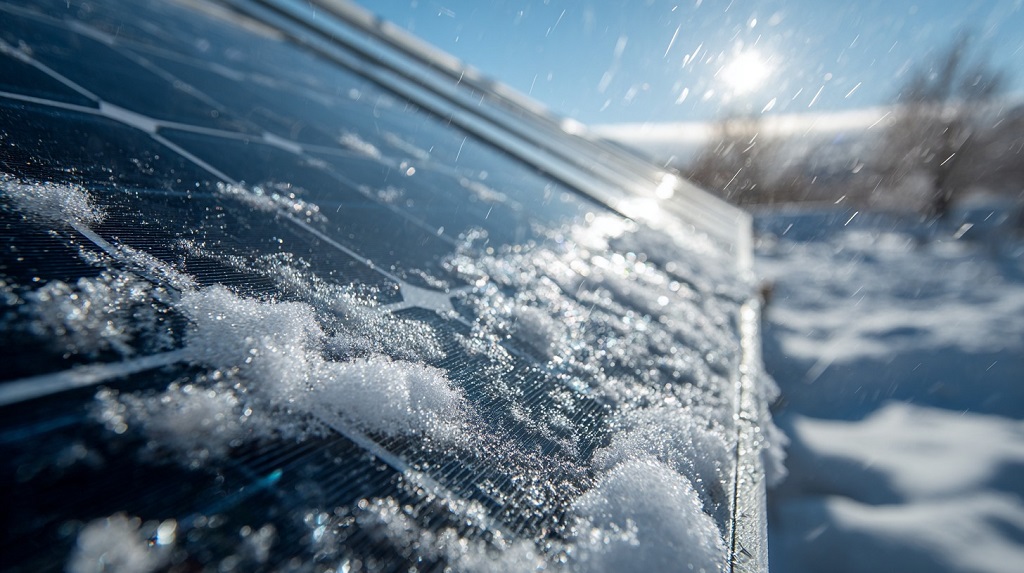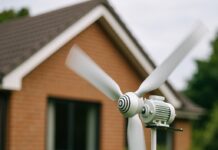
If you already have solar panels, you probably like watching your bill go down each month. But you might also notice that after a while, the numbers don’t look as strong as they did when the panels were brand new. A layer of dust, a branch hanging too far, or even hot summer days can quietly cut into the power you get.
The fix doesn’t need a call to a company or a big bill. Most of it you can handle on your own with things you already have around the house. A quick rinse with the hose, sweeping off some leaves, or tilting the panels a little for the season can bring the output back up.
What follows are seven easy hacks. Nothing complicated or expensive. Just small steps that help your panels do the job they were meant to do, saving you money by making the most of the sun.
1. Rinse Panels with a Garden Hose

Dust, pollen, and grime collect on solar panels over time. Even a thin layer can block sunlight and cut down efficiency.
A simple rinse with your garden hose is often enough to restore lost output.
Do it during early morning or evening when panels are cool, so the sudden change in temperature does not cause stress on the glass.
Also, there are some advanced solutions, such as drones, but they are too expensive to be used at home.
How to Do It?
- Stand safely on the ground if possible, and let the water spray reach the panels.
- Use a gentle, low-pressure setting. High pressure can cause damage.
- Avoid chemical cleaners, as residue may streak the glass and reduce performance.
If you live in a dry area with little rainfall, make rinsing part of your monthly routine. Homeowners in rainy climates can check after long dry spells instead. Sometimes a rinse alone is not enough. Bird droppings, sticky tree sap, or built-up grime may need a little extra effort. A soft sponge, microfiber cloth, or non-abrasive brush works well to loosen tough spots without scratching the panel surface. Timing matters more than most people think. Spraying cold water on hot glass at midday can cause small cracks in the panel surface. Cleaning in direct sunlight also dries water too quickly, leaving streaks that reduce clarity. Early morning, late evening, or overcast days are the best times to clean. Even a small amount of shade on one panel can drag down the output of the entire array. A single branch that leans across in the afternoon or a new antenna installed nearby can cut efficiency more than you might expect. The sun’s position changes through the year. If your system has adjustable mounts, shifting the tilt angle helps panels catch more sunlight. Even a small adjustment can give you a boost. If your panels are fixed on the roof, you probably can’t change their angle. In that case, the only thing that matters is that they were set up at a good angle from the start. For panels on ground mounts or adjustable racks, you can shift the tilt a few times a year. An easy trick is to mark the right spots on the frame so you can move them back quickly without guessing. Solar panels work best when they stay cool. If they sit too close to a dark roof, heat builds up and performance drops. Air moving underneath helps panels breathe and keeps output steady, especially in the middle of summer. Snow stops your panels cold. The same goes for piles of wet leaves in the fall. If sunlight can’t reach the glass, you get zero output. Clearing them off is simple, but you need to do it in a way that doesn’t damage the panels. Extra Tip If winters hit hard in your area, set your panels at a steeper tilt before the season. The angle helps the snow slide off quicker without you needing to climb up there. Most homeowners clean panels once or twice a year. If you live in a dusty area or near trees that drop pollen and sap, you may need to do it more often. A good rule is to check output levels. If they dip noticeably, it’s time for a rinse. Light rain helps, but it doesn’t always remove built-up dirt or bird droppings. In dry climates or during long summer stretches without much rain, you’ll likely need to clean them yourself. Yes, panels slowly degrade over time, usually about half a percent to one percent each year. Regular cleaning and shade management won’t stop natural aging, but they will keep panels performing at their best for longer. No, walking on panels can crack the glass and ruin it. Always clean from the ground if you can, or use long-handled tools designed for panel cleaning. If access is unsafe, it’s better to wait for natural rain or snow melt. Solar panels are built to last for decades, but they only work as hard as the care you give them. You don’t need fancy tools or paid crews. A hose, a broom, and a little attention throughout the year go a long way. Keep them clear, keep them cool, and they’ll keep paying you back.2. Use a Soft Sponge or Brush for Stubborn Dirt
Steps to Follow
3. Clean at the Right Time of Day
Best Practices
4. Trim Trees and Remove Shade Obstacles
What You Can Do
5. Adjust Seasonal Tilt if Mounts Allow
Guidelines to Follow
6. Maintain Airflow to Reduce Heat
What to Do
7. Remove Snow and Heavy Debris Safely
How to Handle It?
FAQs
How often should I clean my solar panels?
Can rain keep my solar panels clean enough?
Do solar panels lose efficiency as they get older?
Is it safe to walk on solar panels when cleaning them?
The Bottom Line


















